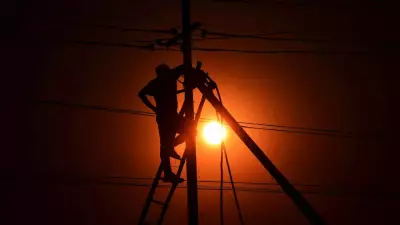
Across India's parched landscapes, a technological revolution is quietly taking place in the skies above. Cloud seeding, the controversial practice of artificially inducing rainfall, is gaining traction as states grapple with worsening water crises and unpredictable monsoons.
How Cloud Seeding Actually Works
The science behind cloud seeding is both fascinating and complex. Aircraft or ground-based generators release substances like silver iodide or salt flares into promising clouds. These particles act as "cloud condensation nuclei" – providing a surface for water vapor to cling to, forming droplets heavy enough to fall as rain.
"It's like giving clouds a gentle nudge," explains Dr. Anjali Sharma, an atmospheric scientist. "We're not creating rain from nothing – we're enhancing what nature has already started."
India's Cloud Seeding Experiments: Success Stories & Challenges
Several Indian states have embarked on cloud seeding missions with varying results:
- Karnataka: Has conducted some of India's most extensive cloud seeding operations, reporting rainfall increases of 20-30% in targeted areas
- Delhi: Recently explored cloud seeding to combat air pollution and water shortages
- Maharashtra & Tamil Nadu: Have initiated pilot projects during critical drought periods
The Billion-Dollar Question: Does It Really Work?
The effectiveness of cloud seeding remains hotly debated within scientific circles. Proponents point to successful operations and increasing government investment as proof of concept. However, skeptics argue that measuring its true impact is challenging because we can't know what would have happened naturally.
Dr. Rajeev Malhotra, a climate researcher, notes: "The biggest challenge is attribution. When it rains after seeding, was it because of our intervention or would it have rained anyway? This uncertainty makes cost-benefit analysis difficult."
Environmental Concerns & Ethical Considerations
Cloud seeding raises important questions that go beyond mere effectiveness:
- Ecological Impact: What are the long-term effects of introducing substances like silver iodide into ecosystems?
- Water Rights: If one state seeds clouds that would have rained elsewhere, does that constitute "rain theft"?
- Cost Effectiveness: With operations costing crores, is this the most efficient solution to water scarcity?
The Future of Rainmaking in India
As climate change intensifies water stress across the subcontinent, cloud seeding is likely to remain part of the conversation. Researchers are developing more sophisticated approaches, including better weather prediction models and targeted seeding techniques.
The ultimate goal? Transforming cloud seeding from an emergency measure into a reliable water management tool that can supplement traditional sources during critical dry periods.
While cloud seeding may not be a magic bullet for India's water woes, it represents humanity's growing determination to harness natural processes in our fight against climate change. The coming years will determine whether this technology becomes a mainstream solution or remains a controversial experiment in weather modification.





